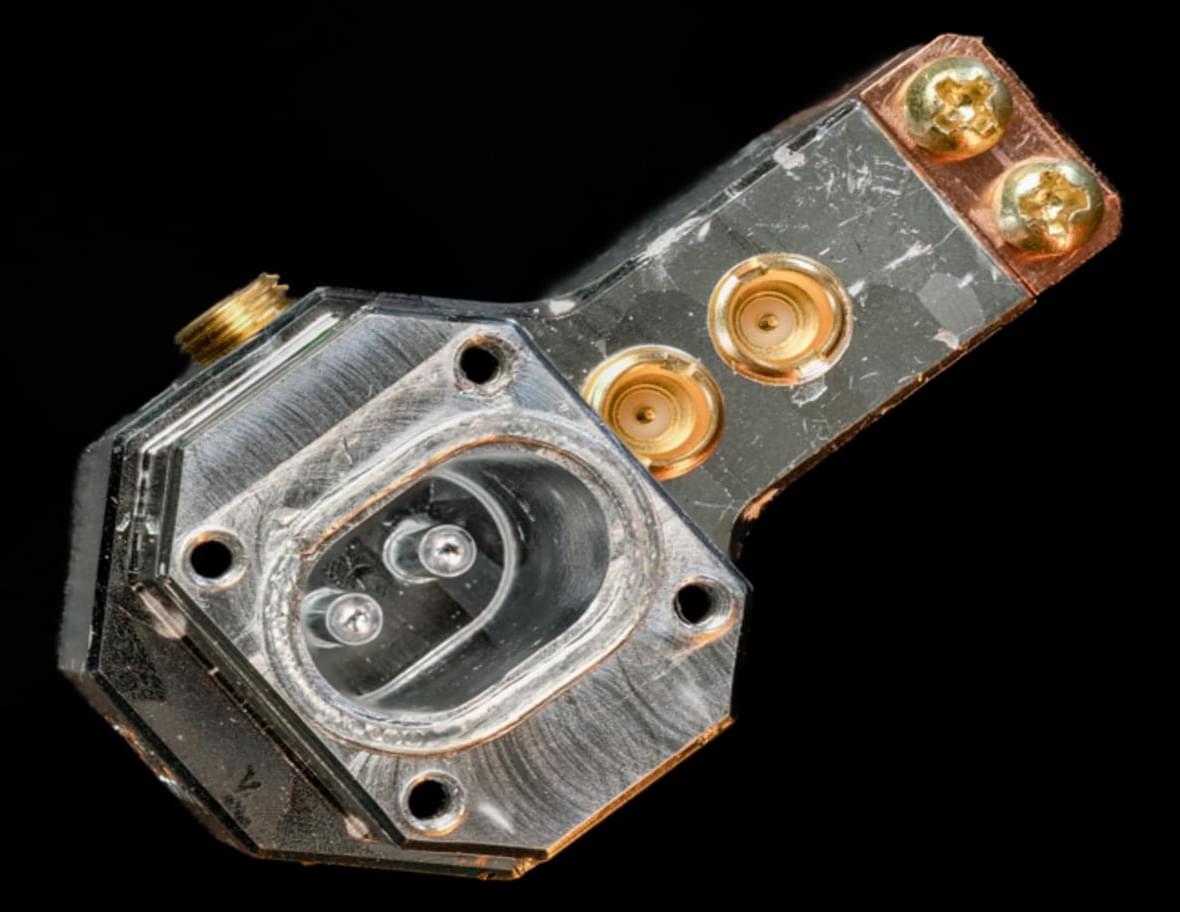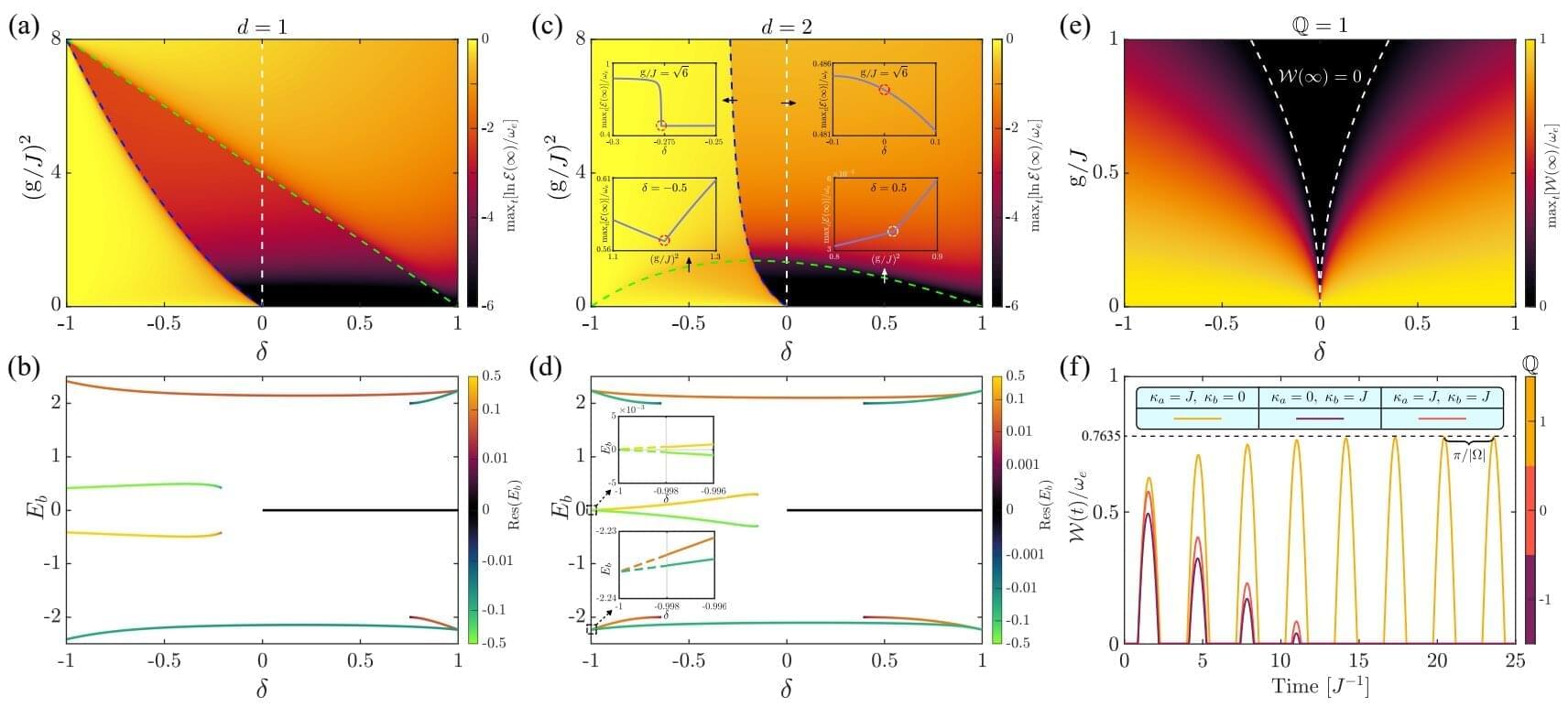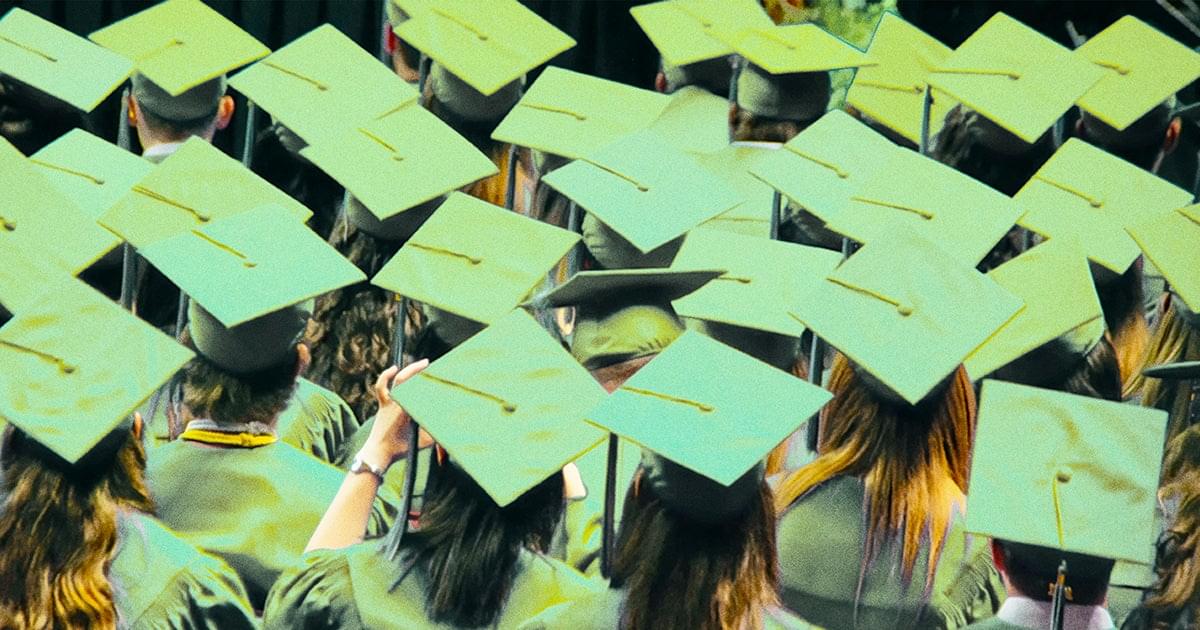Slashes energy use by 99% in cryptographic test




Researchers from the RIKEN Center for Quantum Computing and Huazhong University of Science and Technology have conducted a theoretical analysis demonstrating how a “topological quantum battery”—an innovative device that leverages the topological properties of photonic waveguides and quantum effects of two-level atoms—could be efficiently designed. The work, published in Physical Review Letters, holds promise for applications in nanoscale energy storage, optical quantum communication, and distributed quantum computing.
With increasing global awareness of the importance of environmental sustainability, developing next-generation energy storage devices has become a critical priority. Quantum batteries—hypothetical miniature devices that, unlike classical batteries that store energy via chemical reactions, rely on quantum properties such as superposition, entanglement, and coherence—have the potential to enhance the storage and transfer of energy.
From a mechanistic perspective, they offer potential performance advantages over classical batteries, including improved charging power, increased capacity, and superior work extraction efficiency.


Quantum computing, a field of scientific exploration, is based on the quantum mechanical principle of superposition, which allows particles to exist in multiple states simultaneously. This principle, along with entanglement, a quantum phenomenon that enables particles to be instantaneously connected, provides quantum computers with computational power beyond the reach of classical computers. The development of quantum computing, rooted in the early 20th century, is a testament to intellectual daring, as scientists grappled with concepts that defied logic but were supported by experimental evidence.

With smartphones, game consoles and computers, it’s easy to rack up screen time these days. Of course, this isn’t great for your eyes, as anyone who has suffered an eyestrain hangover after spending hours gaming or doomscrolling knows. Staring at screens all the time tires out the ciliary muscles in your eyes that are responsible for focusing on objects, which can cause you to become near-sighted. However, the answer to improving your vision could be… more gaming?
In a recent study, researchers at Kwansei Gakuin University in Japan developed a VR game that aims to improve players’ eyesight. Although more research is needed, this game could potentially be used to help people with simple myopia (near-sightedness) bolster their vision.
It’s a relatively simple target shooting game developed in Unity for Meta Quest 2. The game features three lanes, each with a circular target on a stick. Pressing down the trigger button on the controller activates a virtual laser beam. Pointing this laser towards a lane highlights the lane and target and puts the player into “aim” mode. But to successfully hit the target, players have to move the controller’s stick in the direction indicated by the small Landolt C (a black ring shape with a gap used in Japanese eye tests) in the middle of the target.

If you thought storing data inside DNA was cool, here’s something even more fascinating. Scientists at the University of Texas at Austin (UT Austin) have invented a way to store digital information inside synthetic polymer molecules. In short, they are transforming tiny bits of plastic into memory banks.
They even used their molecular system to encode a complex 11-character password and then decode it using only electrical signals, without any power, and the expensive and bulky tools typically used for reading molecular data.


In a discovery three decades in the making, scientists at Rutgers and Brookhaven National Laboratory have acquired detailed knowledge about the internal structures and mode of regulation for a specialized protein and are proceeding to develop tools that can capitalize on its ability to help plants combat a wide range of diseases.
The work, which exploits a natural process where plant cells die on purpose to help the host plant stay healthy, is expected to have wide applications in the agricultural sector, offering new ways to protect major food crops from a variety of devastating diseases, the scientists said.
In a study published in Nature Communications, a team led by Eric Lam at Rutgers University-New Brunswick and Qun Liu at Brookhaven National Laboratory in New York reported that advanced crystallography and computer modeling techniques have enabled them to obtain the best picture yet of a pivotal plant protease, a protein enzyme that cuts other proteins, known as metacaspase 9.

As the digital world demands greater data storage and faster access times, magnetic memory technologies have emerged as a promising frontier. However, conventional magnetic memory devices have an inherent limitation: they use electric currents to generate the magnetic fields necessary to reverse their stored magnetization, leading to energy losses in the form of heat.
This inefficiency has pushed researchers to explore approaches that could further reduce power consumption in magnetic memories while maintaining or even enhancing their performance.
Multiferroic materials, which exhibit both ferroelectric and ferromagnetic properties, have long been considered potential game changers for next-generation memory devices.